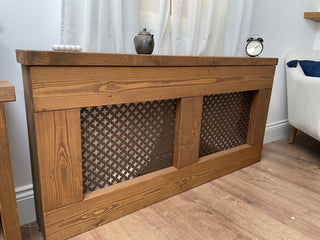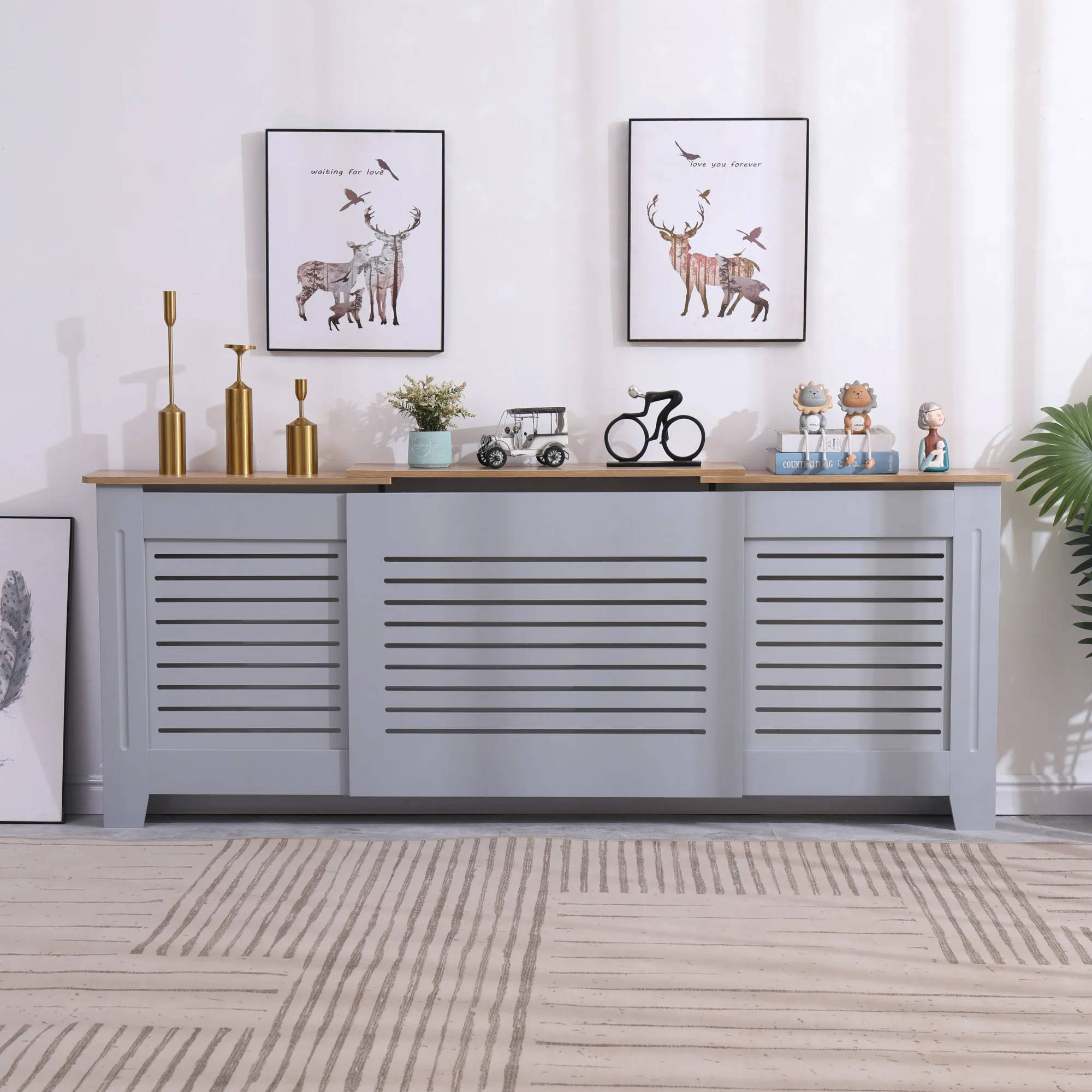How a Radiator Cover Can Boost Energy Efficiency in your house
Radiator Covers: Comprehending Materials, Styles, and Advantages
Radiator covers serve both visual and functional purposes within a home, using a range of products such as mdf, hardwood, and steel to match various layout preferences. Selecting the right radiator cover includes understanding the subtleties of materials, styles, and their associated benefits.
Kinds Of Materials


Wood covers, typically crafted from woods such as oak or maple, offer a timeless, warm look that enhances conventional insides. Their sturdiness and capacity to be stained or repainted add to their flexibility. Steel covers, generally made from steel or light weight aluminum, are preferred for their effectiveness and modern look, usually featuring streamlined lines that boost contemporary areas.
MDF, a made timber product, is prominent for its cost-effectiveness and simplicity of customization. It can be repainted or ended up to match existing decor while providing a smooth surface area. Plastic covers, while much less usual, are lightweight and resistant to dampness, making them ideal for humid atmospheres.
Eventually, the selection of product for a radiator cover need to align with the property owner's design choices, useful needs, and the certain setting where the cover will certainly be mounted. Each product offers a distinct character, guaranteeing that there is a choice to fit every taste and setting.
Popular Style Styles
Emphasizing aesthetic appeal, popular layout styles for radiator covers mirror a range of preferences and interior decoration fads. Typical layouts commonly include complex woodwork and elaborate outlining, making them appropriate for classic or vintage-inspired interiors. These covers typically include sculpted aspects, providing a warm and welcoming feel to any kind of area.
On the other hand, contemporary designs focus on minimal visual appeals, characterized by tidy lines and underrated sophistication. Materials such as metal or streamlined timber with a smooth finish are commonly made use of, enabling these covers to blend seamlessly into modern areas. Industrial styles, on the various other hand, accept resources like revealed metal and concrete, including a strong statement to loft space or metropolitan settings.
For those seeking a special touch, bespoke designs use personalization alternatives that accommodate specific preferences, making it possible for property owners to pick colors, patterns, and products that enhance their design. In addition, farmhouse-style covers integrate rustic aspects, including distressed timber and straightforward forms that stimulate a cozy, nation charm.
Benefits of Radiator Covers
Radiator covers not just enhance the visual allure of a space however also offer numerous useful advantages that make them a beneficial addition to any kind of home. One of the key benefits is safety, particularly in houses with family pets or youngsters. Covers minimize the risk of burns from warm radiator surfaces, making certain a safer atmosphere.
Furthermore, radiator covers can enhance power efficiency. By guiding heat right into the room as opposed to allowing it to get away, they aid preserve a regular temperature, decreasing home heating discover this info here expenses gradually. This is especially useful in older homes where radiator systems may be less effective.
Another noteworthy benefit is noise decrease. Radiators can often produce unwanted sounds throughout procedure, and covers can assist smother these noises, contributing to a more relaxed space. Radiator covers can be useful, YOURURL.com offering extra storage or display screen area, consequently making the most of the energy of often-overlooked areas.
Last but not least, they can shield radiators from dust and debris, which can hinder performance and increase maintenance needs. With these combined advantages, radiator covers emerge as a practical remedy for enhancing both the capability and style of any home atmosphere.
Installation Factors To Consider
Mounting radiator covers needs cautious consideration to make certain both functionality and safety and security (Radiator cover). Analyze the dimensions of your radiator and the surrounding space to ensure a proper fit. Accurate dimensions are critical; an ill-fitting cover can block warmth flow or create safety and security dangers
Following, review the product of the cover. While wood uses visual charm, steel alternatives might offer better durability and heat resistance. Think about the weight of the cover as well; heavier covers may need added support or supports to stay clear of drooping or damage in time.
Air flow is another vital element. Covers need to include ample air movement to prevent overheating and keep reliable home heating. Try to find styles with slats or perforations that allow warm to circulate without blockage.
In addition, make sure that the cover is safely installed to avoid crashes, specifically in homes with pets or children. Radiator cover. It's recommended to adhere to the manufacturer's installment guidelines closely and, if essential, consult a specialist for complicated installments
Upkeep and Care Tips
Appropriate upkeep of radiator covers is vital for guaranteeing their long life and optimum performance. Normal cleansing is essential; dirt and debris can collect, blocking airflow and decreasing heat performance. Make use of a soft, moist fabric or a microfiber duster to gently clean the surface, staying clear of extreme chemicals that may harm the finish. For repainted or timber covers, think about a suitable gloss or protective coating to preserve their look.
Check the covers occasionally for signs of wear or damage, such as splits or peeling off paint. Attending to these issues immediately can avoid additional damage. Ensure that the covers are securely secured and look for any loosened screws or fittings, as resonances from the radiator can loosen them in time.
In colder months, prevent putting more hefty objects or attractive products in addition to the radiator covers, as this can restrain warmth circulation and trigger unneeded anxiety to the framework. Finally, consider seasonal upkeep by removing the covers for thorough cleaning and evaluation during warmer months when the heater is inactive. Taking on these easy care suggestions will improve the efficiency and aesthetic allure of your radiator covers, guaranteeing they serve their objective properly for several years to find.

Verdict
In summary, radiator covers serve as useful and visual enhancements to residential spaces. Careful factor to consider of setup and upkeep additional makes certain the durability and effectiveness of radiator covers in any home environment.
Radiator covers offer both practical and aesthetic purposes within a home, supplying an array of materials such as steel, mdf, and hardwood to suit various design preferences. Selecting the ideal radiator cover entails understanding the nuances of products, layouts, and their linked advantages.Highlighting visual allure, popular style styles for radiator covers mirror a range of tastes and interior design trends.Radiator covers not just boost the visual allure of a room but also offer a number of functional advantages that make them a beneficial enhancement to any type of home. Take into consideration the weight of the cover as well; heavier covers might call for added assistance or supports to stay clear of drooping or damages over time.